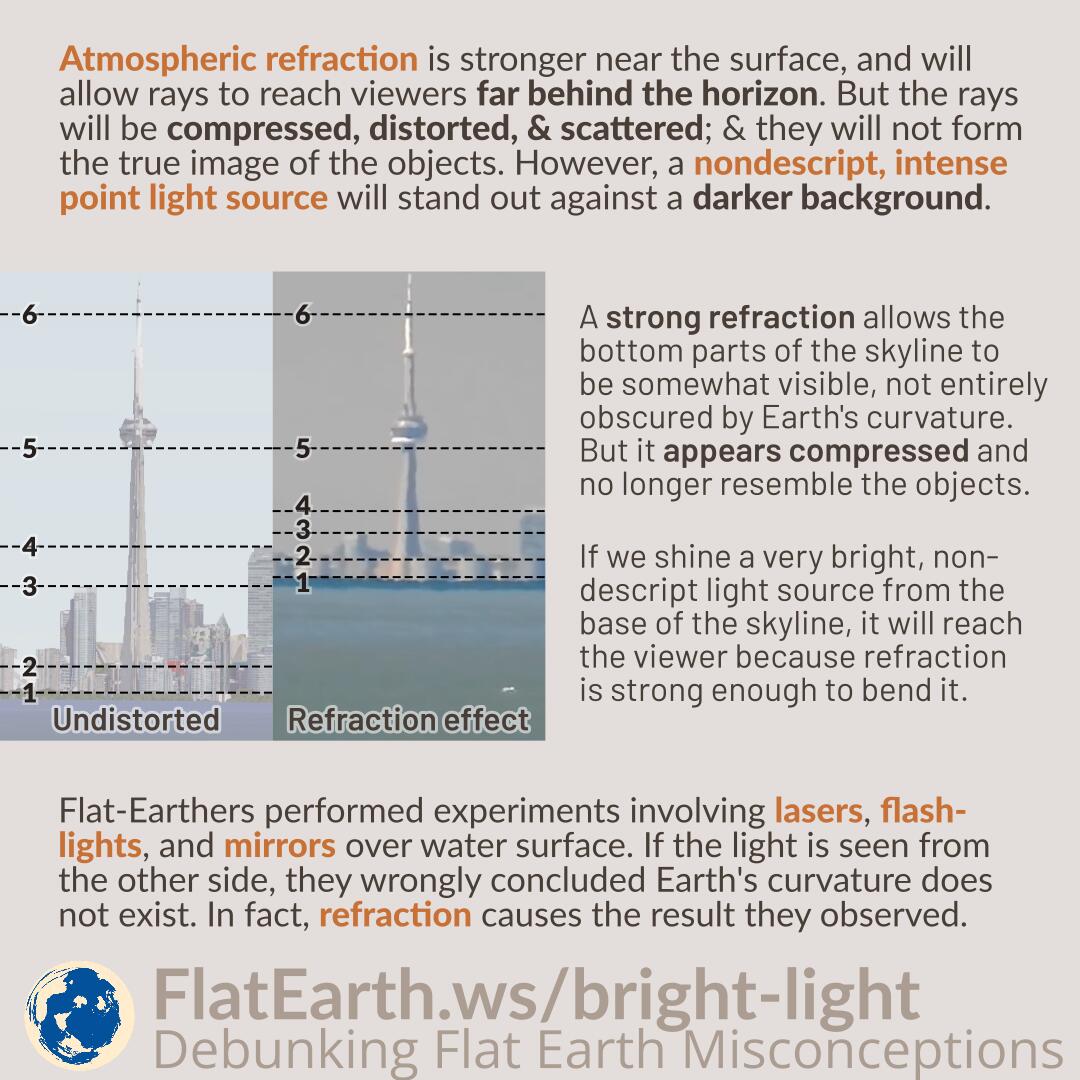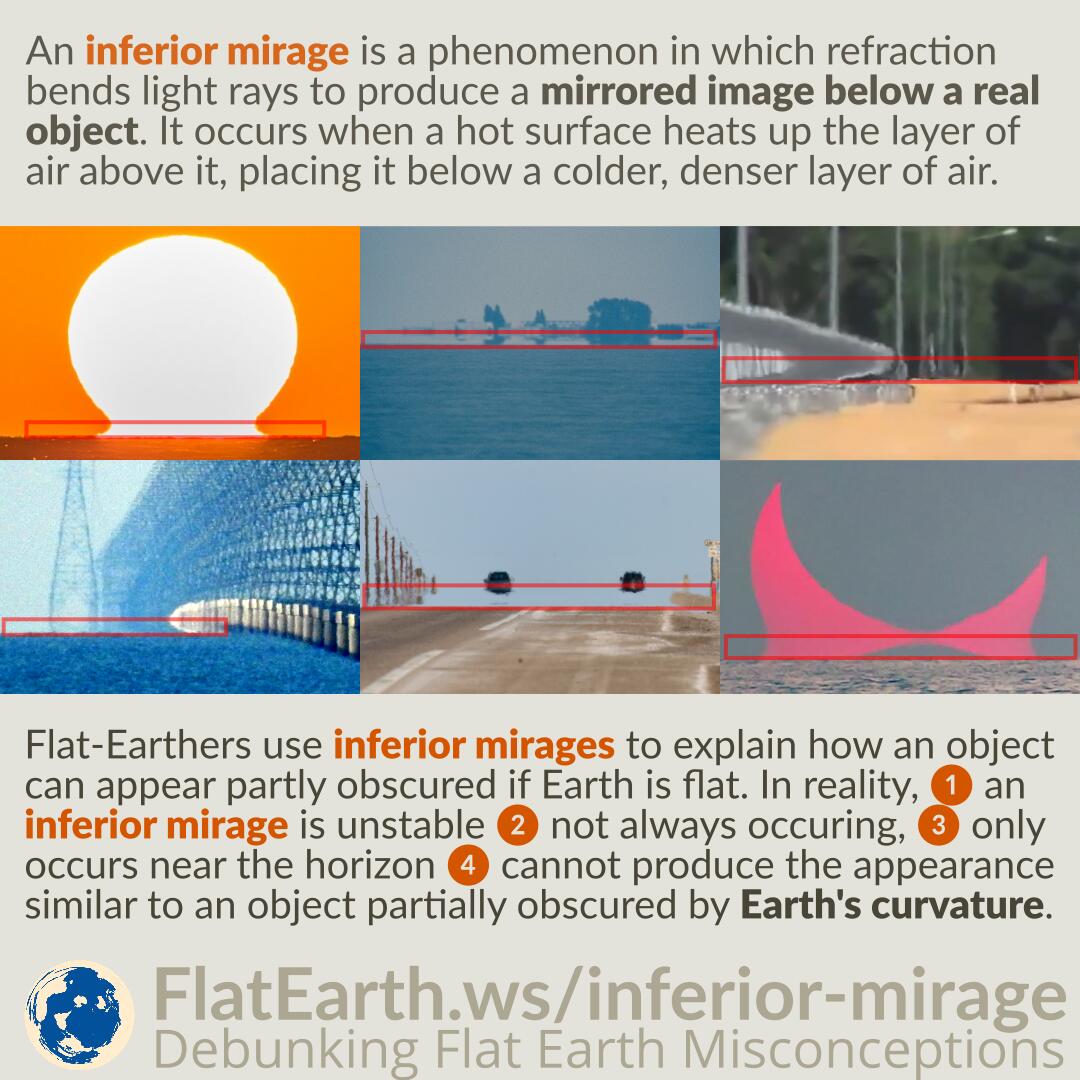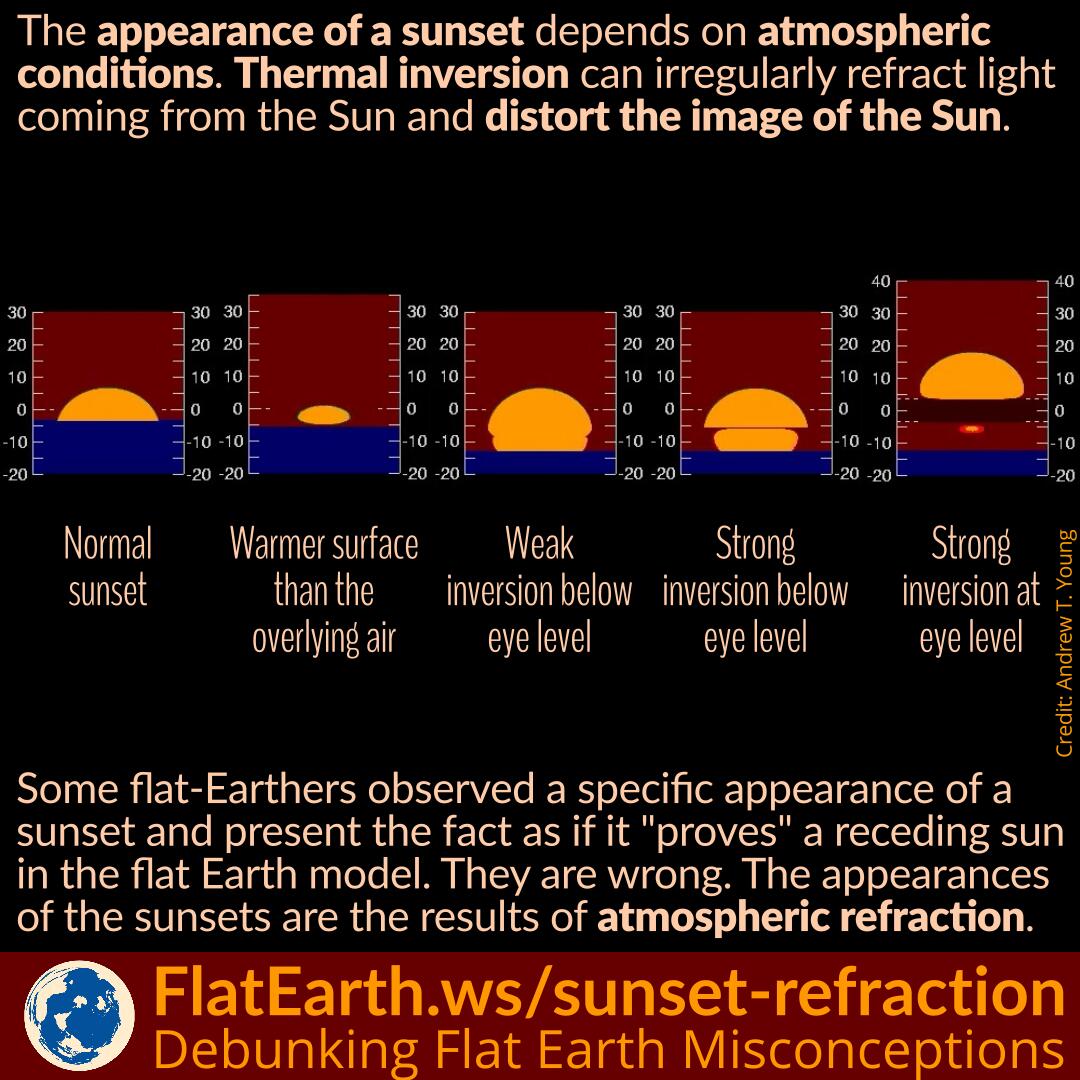Atmospheric refraction is stronger near the surface. Additionally, a thermal inversion can form a duct guiding light ray to follow the curvature of Earth. These phenomena allow light rays to reach the viewer far behind the horizon, but the rays will be compressed, distorted, and scattered, and will not form the true image of the objects. However, a nondescript, intense point light source will stand out against a darker background.
Flat-Earthers like to perform experiments involving lasers, flashlights, and mirrors over the water surface. If the light is visible from the other side, they would wrongly conclude Earth’s curvature does not exist. In reality, atmospheric refraction causes the result they observed.
Continue reading “Experiments Involving Flashlights, Laser, & Reflected Sunlight Over Water Surface”




